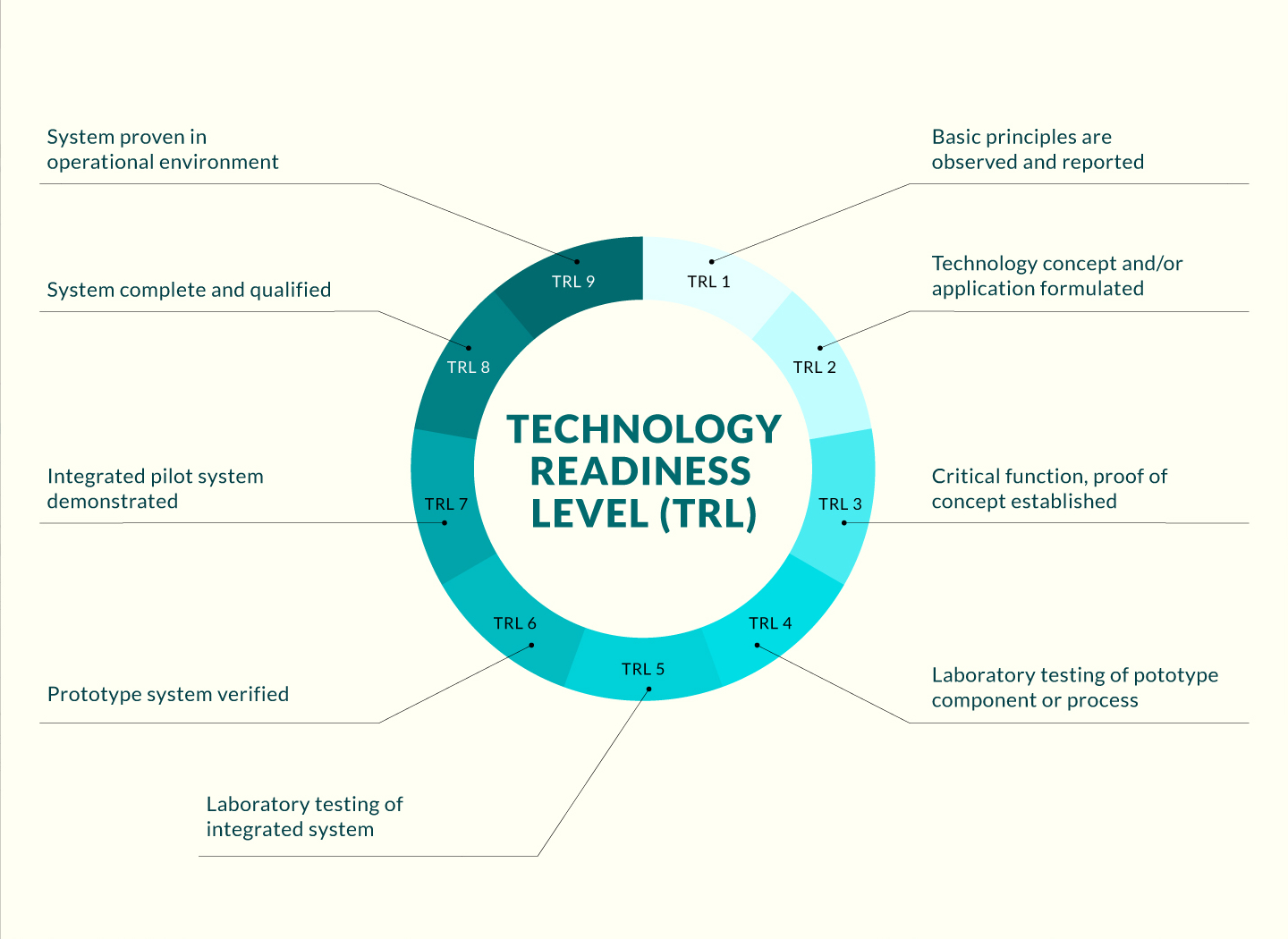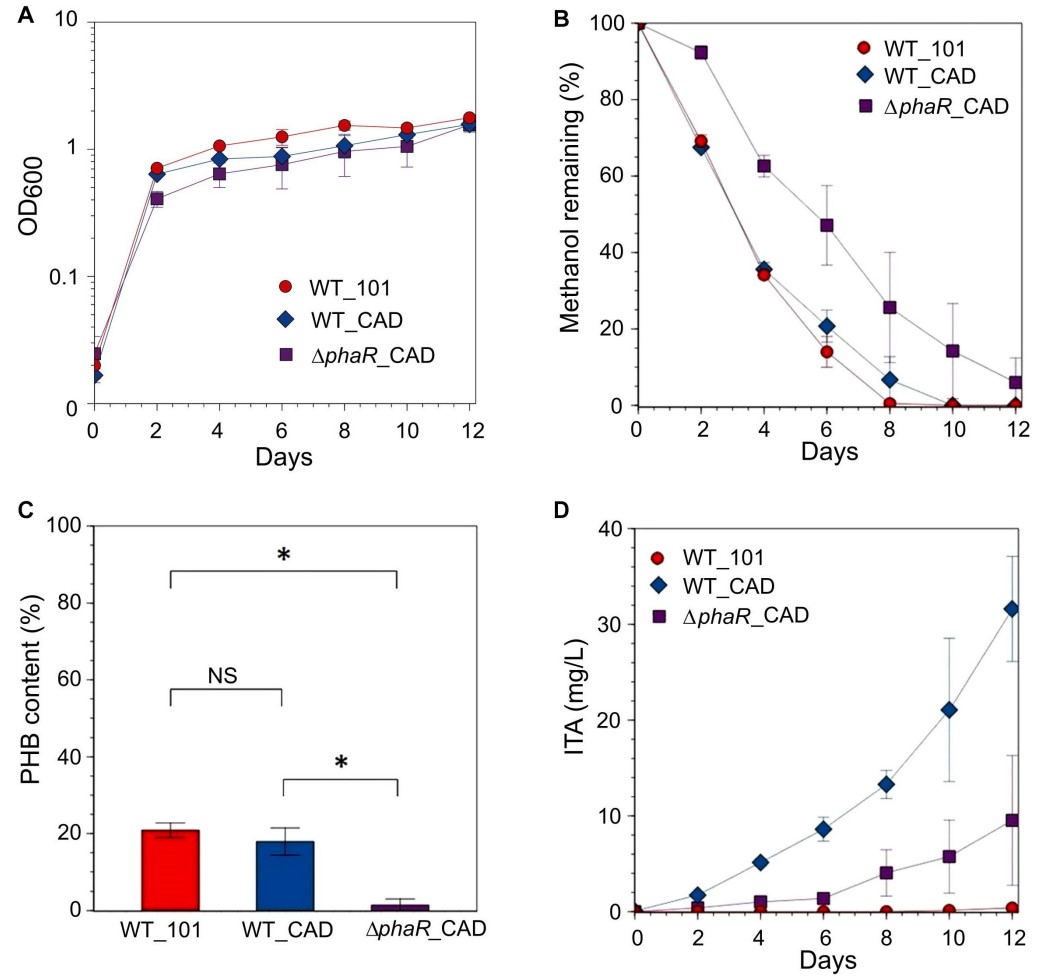


Opportunity
Itaconic acid is a C-5 dicarboxylic organic acid that is widely used as a polymer building block in various industries. The USA Department of Energy lists it as a top-12 value-added chemical produced from biomass. Currently, itaconic acid is produced by fermentation with the fungus Aspergillus terreus. This process is expensive as it requires the use of feeding sugars as substrates; it also has other undesirable characteristics in cultivation including spore formation, susceptibility to damage by shear stress, and filamentous growth.
Given the volume of itaconic acid produced globally (>41,400 tons worth US$74.5 million in 2011, with the potential to exceed 407,790 tons worth US$567 million by 2020), the opportunity exists to develop more cost-effective, simpler methods of producing this chemical. Using the engineered Methylorubrum extorquens AM1, as well as methanol instead of sugars as substrates, would improve itaconic acid production and circumvent the abovementioned issues. However, no reports have been published on using wildtype methylotrophic bacteria to convert methanol to itaconic acid.
Technology
The inventors successfully engineered M. extorquens AM1 to produce itaconic acid using acetate and methanol as feedstock, by expressing a heterologous codon-optimized gene that encodes cis-aconitic acid decarboxylase derived from Aspergillus terreus from a pTE101-based plasmid. When the inventors supplied bacteria with 30 mM of sodium acetate as the carbon source, a peak itaconic acid titer of 4.9 ± 0.7 mg/L was obtained. When they used 240 mM methanol as the carbon source, an itaconic acid titer of 31.6 ± 5.5 mg/L was obtained in a batch culture of the engineered bacteria, while the titer and productivity achieved in a scaled-up fed-batch bioreactor were 5.4 ± 0.2 mg/L and 0.056 ± 0.002 mg/L/h, respectively. Thus, the engineered M. extorquens AM1 enables the conversion of methanol and acetate feedstock to the value-added product of itaconic acid.
Advantages
- Using the engineered M. extorquens AM1 to produce itaconic acid allows for a simpler method of cultivation compared with the current commercial production process.
- M. extorquens AM1 has a versatile lifestyle and can use a variety of carbon sources including acetate and methanol.
- Methanol is a promising inexpensive feedstock for use in the industry; its production also does not complete with the food supply.
- Methanol is also a substrate with low biotic contamination risk during fermentation and is used as a feedstock for the bioproduction of a variety of value-added compounds.
Applications
- The major producing countries of itaconic acid are China, the U.S., France, and Japan.
- The U.S. has a strong biotechnology industry and an abundance of methanol that is produced at relatively low cost.
- The polymers derived from itaconic acid have broad industrial uses including as ingredients for making superabsorbent polymers, as co-builders in detergents, as mineral dispersants in paint coating, as anti-scaling agents in water treatment processes, and as sizing agents for carpets.
- Itaconic acid has the potential to supplement or replace polyacrylic acid, which is made from the finite-based petroleum resource and has an annual market potential worth of US$11 billion, when the price of itaconic acid (which is decreasing) falls below US$1,500 per ton.




